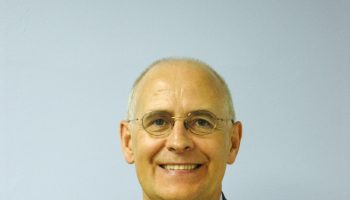
Instead of a half-life, nuclear energy may get a second one.
“We’re on the cusp of a new generation of nuclear power that I believe can help move the world toward a carbon-free future,” said Leslie Dewan.
Dewan holds a Ph.D. in nuclear engineering from Massachusetts Institute of Technology, where she also served as the youngest person ever on the university’s board of trustees, and is CEO of RadiantNano, a radiation technology company. She discussed advancements in alternative energies and the changing perception of nuclear power in her lecture, “Powering the Future,” at 10:45 a.m. Wednesday in the Amphitheater to continue the Chautauqua Lecture Series Week Five theme, “Infrastructure: Building and Maintaining the Physical, Social and Civic Underpinnings of Society.”
Nuclear energy has long captivated the imaginations and fears of Americans. The technology started its life shrouded in secrecy through the Manhattan Project, which developed the first nuclear weapons.
“I believe the original sin of the nuclear energy industry is isolationism,” Dewan said.
After World War II, many of the scientists who worked on the project were frustrated with the application of the technology for weapons and began searching for civilian applications. Initial concepts included nuclear-powered airplanes and the Ford Nucleon car, but the most successful peacetime use of the energy came from nuclear submarines, she said.
In 1955, the U.S. Navy launched the world’s first submarine powered by a nuclear reactor. After realizing its design could be adapted for power stations, the U.S. government rushed to bring the concept to land in a Cold War effort to best the Soviet Union.
“Instead of spending another decade optimizing a new type of nuclear reactor for use on land, the U.S. took the same submarine reactor design for its first commercial power station,” she said.
With some modifications to collect water for use as a coolant and moderator, the design worked. Americans started to embrace the new technology, and Disney even produced a 1957 television special titled “Our Friend the Atom.” A nuclear future had begun.
But then came the 1979 Three Mile Island accident in Pennsylvania; the first-ever large-scale nuclear meltdown at a civilian nuclear power plant. Though the disaster saw no injuries or fatalities, it left a major scar on the face of nuclear power.
“The sense of optimism and blue-sky thinking had largely disappeared,” Dewan said. “The funding disappeared, and the industry hunkered down with what it had and what it knew.”
Just two other large-scale meltdowns have occurred since Three Mile Island: the Chernobyl disaster in 1986, and the Fukushima Daiichi disaster in 2011. Both of these accidents had much larger death tolls, worsening the public’s already shaky relationship with nuclear energy.
Because technology remained unchanged since the 1950s, Dewan attributed these accidents to the industry’s failure to innovate.
A typical nuclear reactor can be thought of as a “fancy way of boiling water,” she said. Nuclear fission — the process in which a nucleus splits spontaneously or upon impact with another particle — heats water in the core of a reactor, which is then pumped into tubes that heat a separate source of water to create steam. That steam then runs through an electric generator, turning it to produce electricity.
This has long been the standard process for nuclear power, but she argued that it is far from the safest. The worst-case scenario is a meltdown, where rods that contain the fuel for fission burn away the water that is necessary for cooling it. If this water is burned away, these rods can begin to melt, creating steam explosions and hydrogen explosions. A nuclear meltdown can result in radioactive contamination and fallout.
But as the world faces an emerging energy crisis, Dewan said now is the time to not only invest in nuclear power, but to explore novel methods of nuclear fission and fusion.
“There’s now a new generation of nuclear engineers who are saying, ‘What if we go back to the early years of the nuclear industry and explore another path? What if we apply modern technology to make things better?’ ” she said.
Applying modern technology does not mean completely giving up on the past. Dewan has a particular focus on molten salt reactors, and she co-founded the startup Transatomic Power that sought to experiment with the 1950s concept.
This class of nuclear fission reactors uses molten salt with a fissionable material as the primary nuclear coolant. The molten salt is cycled through tubes, which externally heats water into steam. This eliminates the potential for nuclear meltdown because the fuel mixture is in a constant molten state, she said.
Molten salt reactors also have passive safety systems known as freeze valves, where salt is frozen by external cooling in the pipe which connects the reactor core and the drain tanks. If electricity is lost in a reactor, the fuel automatically leaves the core and drains through these valves.
This process is also a more sustainable way to replace fossil fuels, she said.
Each time someone uses electricity, power plants react in real time to meet that demand; energy use is highest in the morning, dips in the afternoon and increases again in the evening. When these demands cannot be met, plants must use fossil fuels to fill the gaps. Because molten salt reactors can be regulated and filled in a shorter time than traditional reactors, and produce more energy than wind or solar, they have the capability to meet the ebbs and flows that power grids require, Dewan said.
Though few prototypes have been built due to the extreme heat required and the corrosive nature of the fuel, Dewan is not the only person betting on molten salt reactors. Start-ups in the field have now raised more than $3 billion in funding. Several nations are also starting projects, and China recently completed construction of its first molten salt reactor.
“I’m excited that now, as an industry, we’ve largely come back to our own sense of blue-sky thinking and optimism,” she said. “Only now, we’re able to progress much more rapidly.”




